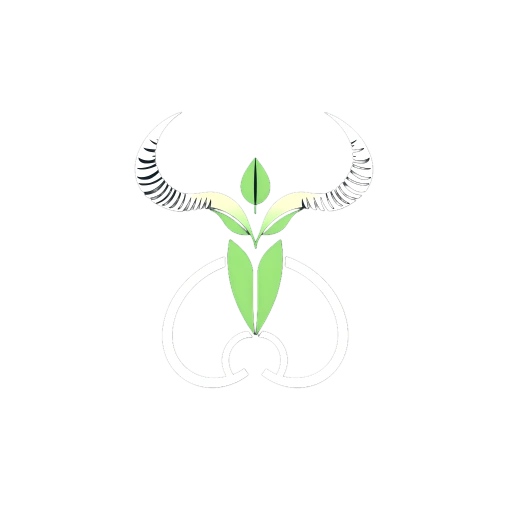There’s a moment I witness often in therapy, and it’s more subtle than most people expect. A wife sits beside her husband—quiet, observant, a little unsure. She’s been experimenting with dominance, but she doesn’t yet fully claim it. She’s testing the water. Watching. And then, as the conversation deepens, she glances at him and says something seemingly small:
“You like it when I take charge, don’t you?”
And he nods. Without hesitation. Without irony. Without looking away.
In that moment, something shifts. Not in their performance—but in their structure. She realizes, maybe for the first time, that this isn’t just a phase. This isn’t just his kink. This is something deeper. He wants to be shaped. Needs to be led. He is not merely tolerating her power—he is asking for it.
From that moment on, the process begins.
Not with whips or rules or leather corsets.
But with language. With subtle choices. With rewiring.
Because the most successful cuckold marriages aren’t built on shock—they’re built on training. And that training, when done skillfully, becomes one of the most transformative and intimate forms of erotic growth I’ve ever seen.
The Myth of Instant Submission
One of the most enduring misconceptions about cuckold dynamics is that submission is innate and immediate. That a husband simply flips a switch, falls to his knees, and begins living in service of his wife’s pleasure.
But real submission—especially within long-term, emotionally grounded marriages—is rarely that theatrical. It unfolds slowly. Organically. And, most often, by invitation.
Husbands who are drawn to cuckoldry often carry internal conflict. They crave surrender, but fear emasculation. They fantasize about their wife’s power, but cling to their own. They want to be guided—but only if they’re not mocked. Only if it’s safe.
This ambivalence is not a barrier to the dynamic. It is the dynamic.
The wife’s role is not to “break” him, but to recognize him—to see beneath the resistance and find the man who wants to be claimed.
And once she finds him, she begins to train him.
Not through punishment.
But through affirmation.
Language as the First Lever
The earliest tool of training is always language.
What does she call him? What does she call herself? What words are reserved for the bull, and which ones are whispered only to her husband?
I often encourage wives to begin with tone rather than titles. Speak clearly. Speak slowly. Speak with intention.
“Let me see you.”
“Good boy.”
“You don’t need to touch me tonight.”
“I decide when.”
These phrases carry more than instruction—they carry energy. They place the wife at the center of the erotic conversation. They cue the husband to step back—not in rejection, but in reverence.
As the husband begins to receive this new language, he doesn’t just hear it. He absorbs it. He begins to crave the sound of her authority. To measure his pleasure against her approval. To orient his arousal around her commands.
This isn’t manipulation. It’s mirroring. She reflects back what he already feels—but doesn’t yet know how to name.
Over time, her words become his structure.
And he starts to feel safe inside them.
Behavioral Conditioning Through Repetition
What begins with words quickly expands into actions.
The wife may establish rituals—not harsh or extreme, but repetitive and clear. Perhaps she locks his chastity device each morning, kisses his forehead, and says, “Today, you’re focused on me.” Perhaps she lets him massage her feet while she reads messages from her bull. Perhaps she gives him permission to stroke himself once a week—and only when she’s present.
These rituals may seem small. But to the submissive husband, they become touchstones. Predictable. Comforting. Erotic.
In behavioral psychology, we call this operant conditioning. Behavior reinforced with reward becomes learned behavior. In cuckold training, the rewards are not always physical. Sometimes they are emotional. A smile. A glance. A word of praise.
And just as powerfully, the absence of reward becomes its own feedback loop.
She ignores him when he begs. She withholds orgasm without needing to explain. She raises a finger—and he stops speaking.
Not because he fears her.
But because he’s learned that her control is not a threat.
It’s a gift.
And he wants more of it.
Building His Emotional Dependence—With Care
As the training deepens, something profound happens beneath the surface: the husband begins to associate his emotional stability with her dominance.
He sleeps better after being denied.
He feels more grounded when she affirms his role.
He feels more connected when she returns from her lover and lets him clean her feet—or her body.
This is not psychological weakness. It’s emotional recalibration.
In traditional relationships, power is shared equally. But in cuckold dynamics, power is negotiated. And part of that negotiation involves creating an emotional dependency that feeds the husband’s need for structure, for containment, for ritualized surrender.
The wife becomes not just a partner, but an emotional axis.
And when she leans into that role—without cruelty, without apology—she begins to feel her own transformation, too.
She is no longer compensating for his fantasies.
She is commanding them.
And he loves her more for it.
The Wife’s Hesitation—and Why It Matters
Wives often come to me with hesitation.
“I’m not dominant by nature.”
“I don’t want to hurt his feelings.”
“I’m afraid I’ll go too far—or not far enough.”
These fears are not a sign of failure. They’re a sign of integrity.
Training a husband to surrender isn’t about becoming someone you’re not. It’s about becoming more fully who you already are—by trusting that your instincts, your rhythms, your authority are enough.
You don’t need to bark orders. You don’t need to be perfect.
You just need to be consistent.
If you say he’ll get to stroke himself on Fridays, then don’t cave on Thursday.
If you tell him he’s your good boy when he massages your legs, then let him feel that pride.
If he begs to watch you with the bull, but the energy doesn’t feel right—say no.
He will test you.
Not because he doubts you.
But because he’s hoping you’ll hold the line.
And when you do?
That’s when he starts to relax.
That’s when the real training begins.
Symbolic Anchors and Ritual Markers
Beyond language and behavior, the most enduring cuckold training includes symbolic anchors—physical or ritual objects that reinforce the dynamic.
A locked chastity device.
A wedding ring replaced with a collar.
A specific chair he kneels in while she entertains guests.
A journal where he writes daily affirmations of service.
A set of panties he folds and places under her pillow each morning.
These symbols aren’t props. They are totems—reminders of who he is becoming.
When he sees them, touches them, engages with them, his body remembers: I am hers. I serve. I surrender.
This embodied repetition is what shifts the cuckold from fantasy into identity.
It is no longer something he does.
It is something he is.
And the wife, by curating this reality, becomes more than a partner.
She becomes his architect.
Knowing When He’s Ready
Training a cuckolded husband is not a race. There’s no finish line. No perfect moment when he becomes “fully submissive” or “trained.”
But there are signs that the structure is working.
He no longer needs constant feedback to feel secure.
He asks for permission not out of fear—but because it centers him.
He receives your pleasure—especially with other men—not as rejection, but as devotion.
He craves the rituals. The denial. The waiting.
He begins to thank you for your power.
When that happens, you’ve crossed a threshold together.
You’re no longer experimenting.
You’re living it.
You’ve built a dynamic rooted not in performance—but in trust.
And from there, the path only deepens.
Because the trained cuckold doesn’t stop craving structure.
He thrives in it.
And you—as his guide, his wife, his dominant—become the one thing he never knew he was missing:
The mirror that shows him who he truly is.



